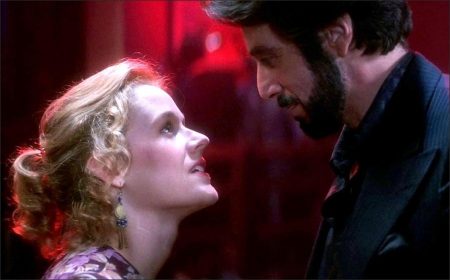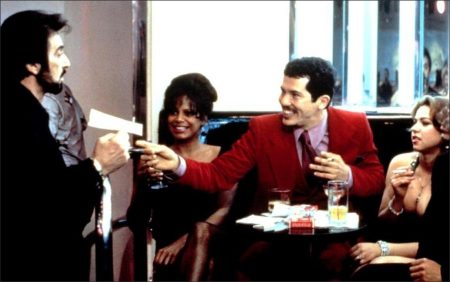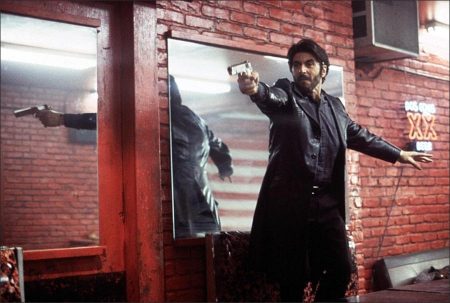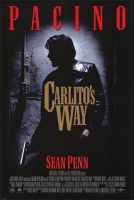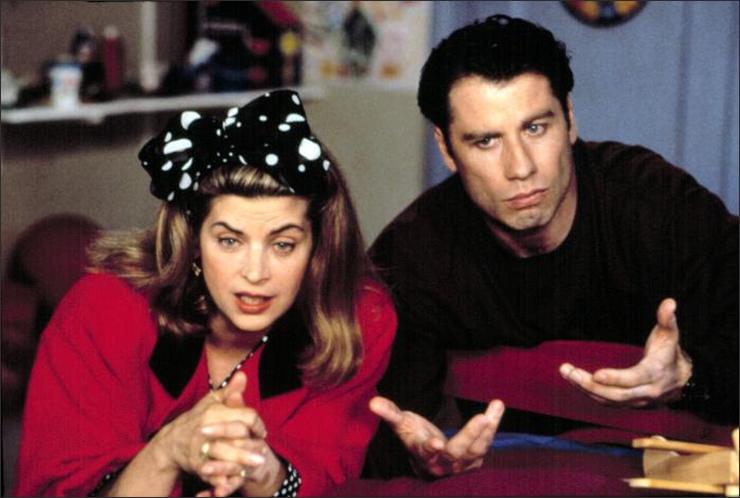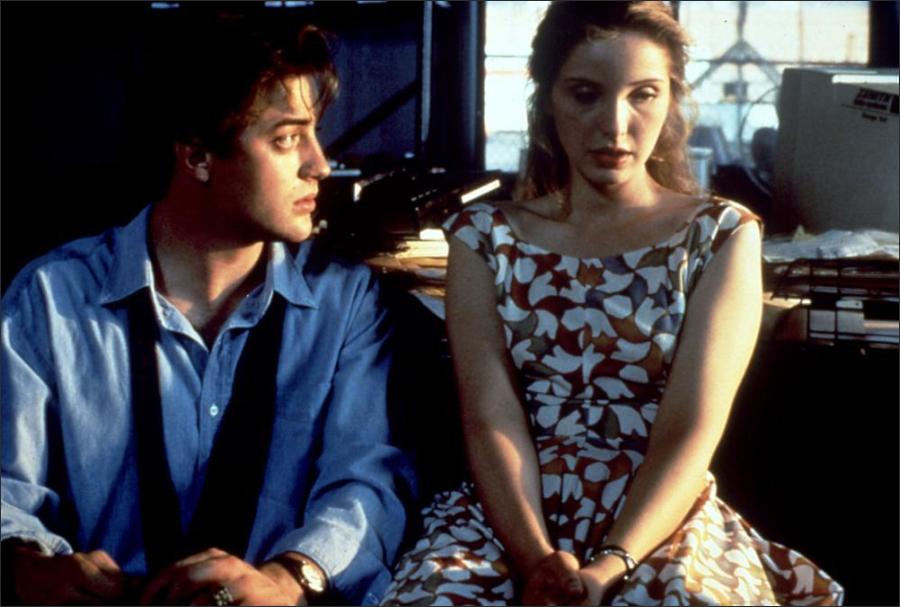Taglines: Sometimes, when you want to come clean, you have to play dirty.
Carlito’s Way movie storyline. A Puerto Rican ex-con pledges to stay away from his former drug dealing ways but finds himself being dragged back by his past connections and the naive machinations of his lawyer and best friend. Hoping to raise enough money to get away from New York, Carlito Brigante takes on the job of running a nightclub, renews an affair with a dancer but old associates and old instincts suck him back into a world of violence and mistrust.
Carlito’s Way is a 1993 American crime film directed by Brian De Palma, based on the novels Carlito’s Way and After Hours[2] by Judge Edwin Torres. The film adaptation was scripted by David Koepp. It stars Al Pacino, Sean Penn, Penelope Ann Miller, Luis Guzman, John Leguizamo, Jorge Porcel, Joseph Siravo and Viggo Mortensen.
The film is based mainly on After Hours, but used the title of the first novel to avoid it being confused with Martin Scorsese’s 1985 film of the same name, and focuses on Carlito’s activities once he is released from prison. Carlito Brigante, a fictional Puerto Rican criminal vows to go straight and to retire in paradise. However, his past will not let him, and he unwittingly ends up being dragged into the same criminal activities that got him imprisoned in the first place.
Film Review for Carlito’s Way
“Scarface” was a great operatic film rooted in Greek tragedy, primarily the downfall of its protagonist related to his own hubris and pride. Its over-the-top theatrics and scenery-chewing acting complemented the absurdist tone of the film; some carping critics complained it was “too violent,” but it was silly violence…and it worked.
“Carlito’s Way” is considered by many to be a companion piece of sorts to “Scarface” – but in its own ways it is vastly different. As “GoodFellas” differed a great deal from “Casino” in its narrative methods, “Carlito’s Way” isn’t as broad and theatrical as “Scarface.” Of course, it’s still a DePalma film, and that means we get some beautiful set pieces – but for the most part DePalma avoids his excessive visuals and instead opts for a balanced mixture of both storyline and directorial flair.
It is not a sequel to “Scarface” – it is an expansion, and it seems entirely apt that its narrative is more mature, considering that Carlito Brigante (the main character) is wiser than Tony Montana from “Scarface.” Carlito is a Puerto Rican ex-con who gets out of a thirty-year jail sentence based on a technicality after serving a mere five years of sentence. Faced with a new life and fresh horizons, he decides to heed the lessons he learned in jail and embark on a new and honest lifestyle.
“Scarface” was Greek tragedy insofar as Tony Montana was doomed to a downfall based on his own egotism and stubbornness. Like Oedipus in Sophocles’ classic story, Montana was too bull-headed to take the advice of his wife and friends and was entirely responsible for his own emotional (and, in “Scarface’s” case, physical) demise.
“Carlito’s Way” is the flip side of the coin. It’s still Greek tragedy, but it offers a new perspective. This time, the protagonist tries to change his fate, but his life is doomed to its inevitable conclusion. Carlito tries to change his ways, but – to paraphrase a character from another film – there is only one guarantee…Carlito Brigante will never see heaven. That’s the fundamental truth of this movie, and DePalma’s less showy camera-work, and the more mature characterizations by the actors, and the believable script, ensure that “Carlito’s Way” is an entirely human experience – far more so than “Scarface.” (Which is still a great film based on its own goals.)
Carlito’s Way (1993)
Directed by: Brian De Palma
Starring: Al Pacino, Sean Penn, Penelope Ann Miller, Ingrid Rogers, John Leguizamo, Luis Guzmán, James Rebhorn, Viggo Mortensen, Ángel Salazar, Adrian Pasdar
Screenplay by: David Koepp
Production Design by: Richard Sylbert
Cinematography by: Stephen H. Burum
Film Editing by: Kristina Boden, Bill Pankow
Costume Design by: Aude Bronson-Howard
Set Decoration by: Leslie A. Pope
Art Direction by: Gregory Bolton
Music by: Patrick Doyle
MPAA Rating: R for strong violence, drug content, sexuality and language.
Distributed by: Universal Pictures
Release Date: November 12, 1993
Views: 408
